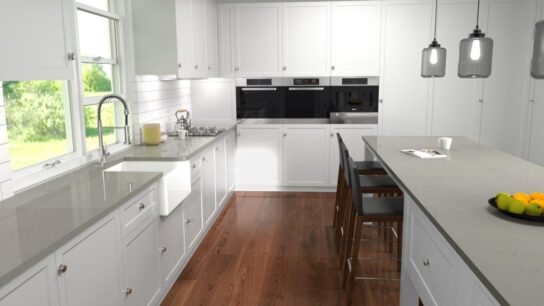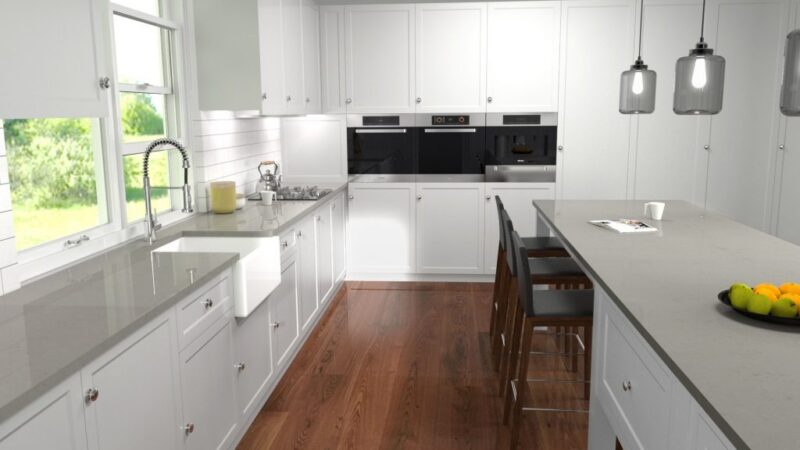Choosing the right roofing material for your home from Tennessee Roofing Concepts is a critical decision that affects not only the appearance of your house but also its durability, energy efficiency, and long-term maintenance needs. Asphalt shingles, metal, and tile are three popular roofing options, each offering distinct advantages depending on your location, budget, and personal preferences. We will explore the key factors to consider when choosing these roofing materials to help you make an informed decision for your home.
Factors to consider when choosing these roofing materials
- Durability and Longevity
One of the most important factors to consider when selecting a roofing material is its durability and lifespan. Different materials offer varying resistance levels to weather conditions, wear and tear, and overall longevity.
Asphalt shingles are one of the most widely used roofing materials due to their affordability and ease of installation. Depending on the quality of the shingles and local weather conditions, they generally last between 20 and 30 years. However, they are more prone to damage from strong winds, hail, and extreme temperatures, which can shorten their lifespan.
On the other hand, metal roofing is known for its exceptional durability. It can last 40 to 70 years or more with minimal maintenance. Metal roofs are highly resistant to fire, wind, and impact, making them a great choice for areas prone to severe weather conditions. They are also less likely to crack, rust, or fade over time, ensuring long-term protection for your home.
Tile roofing, whether made from clay or concrete, is one of the most durable roofing options available. Depending on the quality of the tiles and proper installation, tile roofs can last up to 100 years. They are resistant to fire, moisture, and most weather conditions, making them an excellent long-term investment for homeowners. However, tiles are more fragile than other materials and may crack if impacted by heavy objects, such as falling branches.
- Energy Efficiency
Energy efficiency is another key consideration when choosing a roofing material, as it can significantly impact your home’s cooling and heating costs. Some materials are better at reflecting heat and providing insulation, reducing the amount of energy needed to regulate indoor temperatures.
Asphalt shingles absorb more heat from the sun, which can make your home warmer in the summer and increase cooling costs. While some asphalt shingles are available in reflective or “cool roof” options, they generally do not provide the same level of energy efficiency as metal or tile roofs.
Metal roofing is highly reflective, which helps reduce heat absorption and keeps your home cooler during hot weather. This can result in lower energy bills, especially in warmer climates. Additionally, metal roofs can be coated with reflective paint or finishes to enhance their energy efficiency further.
Tile roofing also offers excellent energy efficiency due to its natural insulating properties. The thick tiles help keep your home cooler in the summer and warmer in the winter by preventing heat transfer. This can lead to significant energy savings, especially in extreme temperatures. Additionally, the air space between the tiles and the roof deck provides additional insulation, enhancing the roof’s energy performance.
- Maintenance and Repairs
Another factor to consider is the level of maintenance required for your roof, as it can affect the long-term cost and convenience of the material you choose.
Asphalt shingles require moderate maintenance over their lifespan. They may need to be repaired or replaced more frequently than other materials, especially after severe weather events. Regular inspections are necessary to check for missing or damaged shingles, which can lead to leaks if not addressed promptly.
Metal roofing is relatively low maintenance, requiring only occasional inspections and cleaning. It is resistant to rust, corrosion, and mold growth and does not require frequent repairs. However, any damage to a metal roof, such as dents or scratches, should be addressed quickly to prevent further deterioration.
Tile roofing is also low-maintenance, though it may require more attention in areas with heavy rainfall or snowfall. Tiles can crack or break if impacted by heavy objects, but individual tiles can be replaced without needing a full roof replacement. Regular cleaning prevents moss or algae growth, especially in humid climates.
- Cost Considerations
Cost is often a significant factor when choosing a roofing material, and it’s important to weigh the initial investment against the long-term benefits and maintenance costs.
Asphalt shingles are the most affordable option, making them popular for homeowners on a budget. The cost of asphalt shingles varies depending on the quality and style, but they are generally less expensive to install than metal or tile roofs. However, the shorter lifespan and higher maintenance costs offset the initial savings over time.
Metal roofing is more expensive than asphalt shingles, with costs varying based on the type of metal used (aluminum, steel, or copper). The higher upfront cost of metal roofing is balanced by its durability, energy efficiency, and low maintenance needs, which can lead to savings over the long term.
Tile roofing is the most expensive of the three options in terms of material and installation costs. However, its longevity and energy efficiency make it a worthwhile investment for homeowners who plan to stay in their homes for many years. While the initial cost is higher, tile roofing offers long-term value and durability, making it a cost-effective option in the long run.
- Aesthetic Appeal
Aesthetic appeal is an important consideration for many homeowners, as the roof plays a key role in the overall appearance of your home. Each roofing material offers a different look, and the right choice will depend on your home’s architectural style and personal preferences.
Asphalt shingles are available in various colors and styles, making them a versatile option that can complement most home designs. Whether you prefer a traditional or modern look, there is likely an asphalt shingle option that fits your vision.
Metal roofing offers a sleek, modern aesthetic that works well with contemporary or industrial-style homes. It is available in various colors and finishes, allowing you to create a unique look that enhances your home’s curb appeal.
Tile roofing is often associated with Mediterranean, Spanish, or Southwestern architectural styles, but it can also work well with other home designs. The natural, earthy tones of clay or concrete tiles add a timeless and elegant appeal to any home.
Choosing between asphalt shingles, metal, and tile roofing depends on several factors: durability, energy efficiency, maintenance, cost, and aesthetic appeal. Each material offers unique advantages that can enhance the performance and appearance of your home. By considering these factors and assessing your needs, you can select the roofing material that provides the most value and long-term benefits for your home. Whether you prioritize affordability, energy savings, or aesthetic appeal, the right roofing choice will protect your home and enhance its quality.



